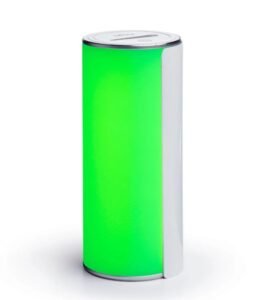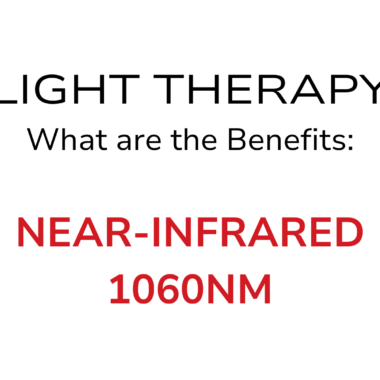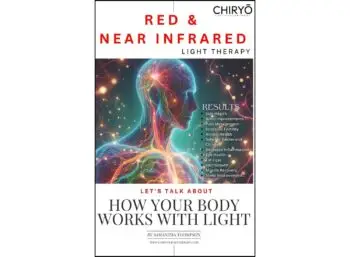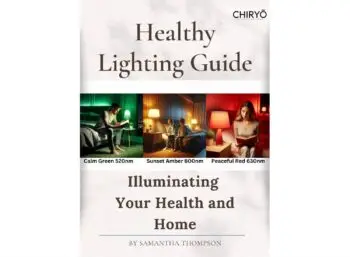- Introduction: Embracing the Tranquillity of Green Light
- Understanding Sleep and its Profound Importance
- Unveiling Green Light Therapy: A Gentle Pathway to Restful Sleep
- Origins and Evolution: Tracing the Roots
- The Science Behind Green Light Therapy: A Soothing Symphony
- Key Wavelengths: Harnessing the Power of Green
- Green Light Therapy for Sleep: Illuminating the Evidence
- Clinical Studies: Shedding Light on Sleep Improvement
- Treatment Protocols: Navigating the Path to Restful Nights
- Devices: Lamps and Bulbs for Tranquil Slumber
- Testimonials: Voices of Peaceful Sleep
- Beyond Sleep: Additional Benefits of Green Light Therapy
- Safety Considerations and Precautions
- Frequently Asked Questions: Your Green Light Therapy Guide
- Embracing the Green Glow: A Pathway to Restful Nights and Revitalised Days
Table of Contents
Toggle1. Introduction: Embracing the Tranquillity of Green Light - A Natural Lullaby for Restful Sleep
In today’s fast-paced world, where stress and screens reign supreme, achieving quality sleep often feels like an elusive dream. We toss and turn, battling insomnia, anxiety, and the relentless blue light emitted from our devices.
The consequences of sleep deprivation are far-reaching, impacting our physical and mental health, productivity, and overall quality of life. But amidst the chaos of modern living, a gentle and natural solution beckons – green light therapy.
Imagine harnessing the soothing power of green light, a colour long associated with nature, tranquillity, and renewal, to guide you towards a state of deep relaxation and restful slumber.
Research suggests that exposure to green light, particularly within specific wavelengths, can enhance sleep quality, regulate your body’s natural sleep-wake cycle, and even provide relief from insomnia and other sleep disorders.
This article will illuminate the science behind green light therapy, exploring its fascinating history, its impact on the brain and body, and the clinical studies that support its efficacy in promoting sleep.
We’ll delve into the specific wavelengths of green light that hold the key to unlocking its sleep-enhancing potential, and we’ll provide practical guidance on how to incorporate green light therapy into your evening routine for optimal results.
Whether you’re a seasoned insomniac, a frequent traveller battling jet lag, or simply seeking a more natural and holistic approach to improving your sleep, green light therapy may offer a gentle yet powerful solution.
Join us as we explore the transformative potential of this therapy and discover how it can help you embrace the tranquillity of green light and experience the restorative power of a good night’s sleep.



2. Understanding Sleep: Its Profound Importance and the Consequences of Disruption
Sleep, often dismissed as a mere pause in our busy lives, is in fact a fundamental pillar of our health and well-being. It is during these tranquil hours that our bodies embark on a remarkable journey of repair and rejuvenation.
From cellular restoration to muscle growth, sleep allows our physical selves to recharge and prepare for the challenges of the day ahead.
Our brains, too, undergo a profound transformation during sleep. It’s a time for consolidating memories, processing information, and enhancing cognitive function. Without adequate sleep, our ability to learn, think clearly, and make sound decisions becomes compromised.
Furthermore, sleep plays a crucial role in bolstering our immune system, strengthening its defences against infections and diseases. A lack of sleep can leave us vulnerable to illness and impair our body’s ability to fight off pathogens.
The High Cost of Sleep Deprivation
Insufficient or poor-quality sleep is not merely an inconvenience; it carries a hefty price tag for our overall health and quality of life. Chronic sleep deprivation has been linked to a myriad of health problems, including:
- Cardiovascular Disease: Increased risk of high blood pressure, heart attack, and stroke.
- Diabetes: Impaired glucose metabolism and insulin resistance, increasing the risk of developing type 2 diabetes.
- Obesity: Disruptions in appetite-regulating hormones, leading to weight gain and increased risk of obesity.
- Mental Health Challenges: Heightened risk of anxiety, depression, and other mood disorders.
- Cognitive Impairment: Difficulty concentrating, impaired memory, and reduced alertness.
- Weakened Immune System: Increased susceptibility to infections and illness.
The pervasive impact of sleep deprivation underscores the urgency of finding effective solutions to promote restful slumber and address sleep disorders.
The Quest for Restful Slumber
Recognising the critical importance of sleep, scientists and researchers are tirelessly exploring new avenues to enhance sleep quality and tackle the challenges of sleep deprivation.
This pursuit has led to the emergence of promising therapies like green light therapy, a natural and non-invasive approach that harnesses the power of light to regulate sleep-wake cycles and improve sleep quality. By addressing the root causes of sleep disruption, green light therapy offers a beacon of hope for those seeking to reclaim the restorative power of sleep and unlock their full potential for health and vitality.
3. Unveiling Green Light Therapy: A Gentle Pathway to Restful Sleep
Green light therapy, a relatively new and innovative approach to improving sleep, offers a promising alternative to traditional sleep aids. It leverages the natural power of light to promote relaxation and regulate sleep patterns, making it an attractive option for those seeking a non-invasive and drug-free solution to their sleep woes.
Origins and Evolution: Tracing the Roots
The therapeutic use of light is deeply rooted in human history, dating back to ancient civilizations who recognized the sun’s vital role in health and well-being. Sunlight, with its full spectrum of colours, was intuitively understood to influence our bodies and minds, promoting vitality and balance.
However, it was not until the early 20th century that the scientific exploration of light therapy truly began. Pioneering researchers delved into the effects of different light wavelengths on various biological processes, laying the groundwork for the development of modern light therapy techniques.
The advent of LED (light-emitting diode) technology in the 1960s marked a significant turning point, offering a safe, controlled, and cost-effective way to deliver specific wavelengths of light for therapeutic purposes.
In recent years, researchers have turned their attention to the potential of green light, particularly within the 500-570nm range, to influence sleep and promote relaxation. This gentle and soothing colour, often associated with nature and tranquillity, has shown promising results in clinical studies, paving the way for its use as a natural sleep aid.
The Science Behind Green Light Therapy: A Soothing Symphony for the Senses
Green light therapy works its magic by interacting with specialised photoreceptors in our eyes, called intrinsically photosensitive retinal ganglion cells (ipRGCs). These cells, distinct from the rods and cones responsible for vision, are particularly sensitive to blue and green light. When exposed to green light, these ipRGCs send signals to the brain, influencing various physiological processes that contribute to sleep and relaxation.
- Melatonin Regulation: Green light is believed to play a role in regulating the production of melatonin, a hormone that helps control our sleep-wake cycle. Exposure to green light in the evening can help to increase melatonin levels, signalling to the body that it’s time to wind down and prepare for sleep.
- Calming the Nervous System: Green light has been shown to have a calming effect on the nervous system, reducing anxiety and stress levels. This relaxation response can further facilitate sleep onset and improve overall sleep quality.
- Pain Reduction: Some studies suggest that green light therapy may also have analgesic (pain-relieving) effects, which can be particularly beneficial for individuals experiencing pain-related sleep disturbances. By easing discomfort, green light therapy can help create a more conducive environment for restful sleep.
Key Wavelengths: Harnessing the Power of Green
While the entire green light spectrum (500-570 nm) may offer some benefits, certain wavelengths have garnered particular attention for their impact on sleep:
- 520-530nm: This wavelength range has shown promise in promoting melatonin production and improving sleep quality in clinical studies. It’s considered to be the most effective wavelength for enhancing sleep onset and reducing sleep latency.
- 550nm: This wavelength is often used in combination with other colours for its potential mood-boosting and calming effects. While its direct impact on sleep may be less pronounced than 520-530nm, it can contribute to a more relaxed state of mind, which can indirectly improve sleep quality.
By harnessing the power of these specific green light wavelengths, individuals can tap into a natural and gentle approach to improving their sleep, promoting relaxation, and enhancing overall well-being.
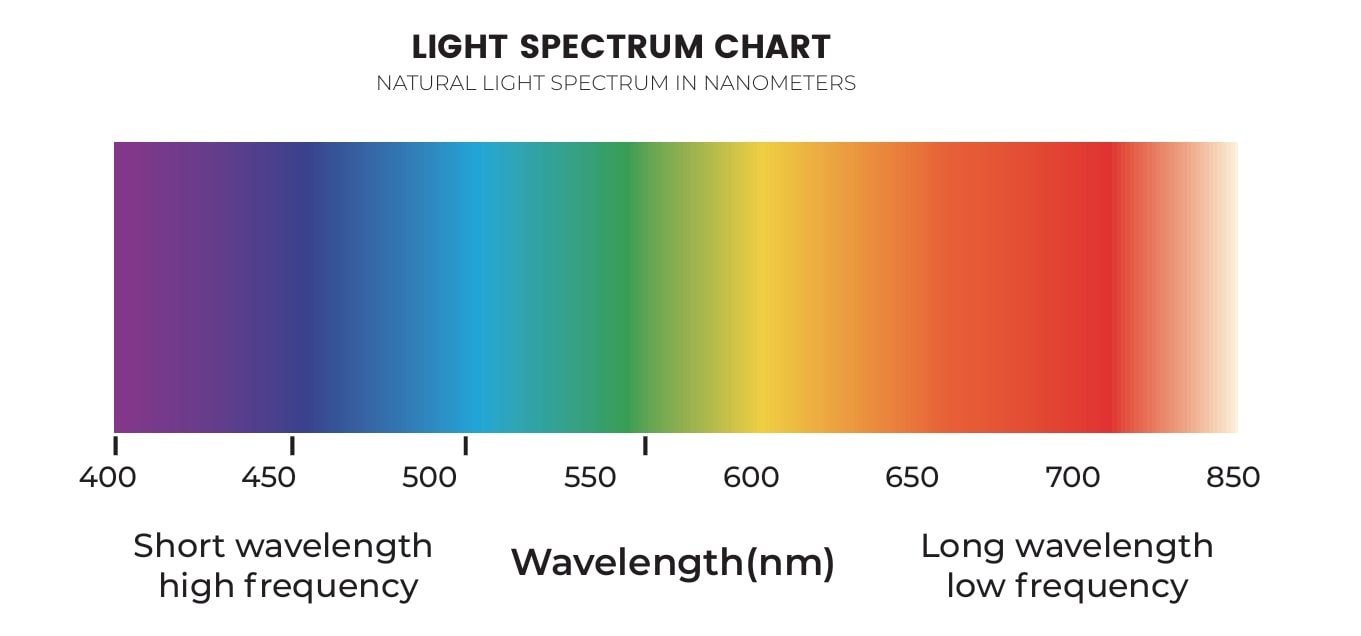
4. Green Light Therapy for Sleep: Illuminating the Evidence
Clinical Studies: Shedding Light on Sleep Improvement
Several clinical studies have investigated the effects of green light therapy on sleep, with encouraging results:
- A 2017 study published in the Journal of Psychiatric Research found that exposure to 525nm green light before bedtime significantly improved sleep quality in individuals with insomnia. Reference: https://pubmed.ncbi.nlm.nih.gov/27544921/
- A 2020 study in the Journal of Sleep Research reported that green light therapy using a polychromatic light source with a peak at 550nm reduced sleep latency (the time it takes to fall asleep) and improved sleep efficiency in healthy adults. Reference: https://www.ncbi.nlm.nih.gov/pmc/articles/PMC7350976/
- Animal studies: Research on mice has also demonstrated the sleep-promoting effects of green light. A 2013 study published in PLOS ONE found that exposure to 530nm green light significantly increased non-rapid eye movement (NREM) sleep, a crucial stage for rest and restoration. Reference: https://journals.plos.org/plosone/article?id=10.1371/journal.pone.0072932
- Green Light Exposure at Night Induces Faster Subjective and Objective Sleep Onset Compared to Dim Light in Healthy Adults (2023). This study, published in the Journal of Sleep Research, investigated the effects of 520nm green light exposure on sleep onset and sleep quality in healthy adults.
The results showed that exposure to green light before bedtime led to faster subjective and objective sleep onset compared to dim light. Link: https://www.ncbi.nlm.nih.gov/pmc/articles/PMC9849914/ - Green Light Suppresses Melatonin in Humans but Does Not Affect Sleepiness or Circadian Phase (2021). This study, published in the journal Sleep, investigated the effects of 520nm green light on melatonin suppression, sleepiness, and circadian phase in healthy adults. While the study found that green light did suppress melatonin levels, it did not significantly affect subjective sleepiness or circadian phase markers.
This suggests that green light may influence certain aspects of sleep regulation without directly impacting subjective sleepiness or circadian timing.
These studies highlight the growing body of evidence supporting the potential benefits of 520nm green light therapy for sleep improvement.
While more research is needed to fully understand its mechanisms and long-term effects, these findings offer a promising outlook for individuals seeking natural and non-invasive solutions for sleep-related concerns.
Treatment Protocols: Navigating the Path to Restful Nights with Green Light Therapy
While specific recommendations may vary depending on the individual and the device being used, these general guidelines will help you navigate your journey towards restful nights with green light therapy:
Wavelength: The Key to Unlocking Sleep Benefits
Opt for devices emitting green light within the 520-570nm range, with a particular focus on 530 nm. This wavelength has been extensively studied and shows great promise in promoting melatonin production and improving sleep quality.
Timing: Setting the Stage for Sleep
Expose yourself to green light in the evening, ideally 1-2 hours before bedtime. This timing allows the light to influence your natural melatonin production, signalling to your body that it’s time to wind down and prepare for sleep.
Duration: A Gradual Approach to Relaxation
Start with shorter sessions of 5-10 minutes to allow your body to adjust to the therapy. Gradually increase the duration as tolerated, up to 20-30 minutes. Remember, consistency is key, so aim for regular use to establish a healthy sleep routine.
Distance: Finding Your Comfort Zone
Maintain a comfortable distance from the light source, typically around 2-3 feet. This ensures adequate exposure without overwhelming your eyes or disrupting your sleep environment.
Consistency: The Key to Sustained Success
Like any wellness practice, consistency is crucial for achieving optimal results with green light therapy. Aim for regular use, ideally every evening before bed, to establish a healthy sleep routine and experience the full benefits of this gentle therapy.
Additional Considerations
While these general guidelines provide a starting point, it’s important to listen to your body and adjust your treatment plan accordingly. If you experience any discomfort or have any concerns, consult with a healthcare professional for personalised guidance.
Remember, green light therapy is a complementary approach to sleep improvement. It can be used alongside other healthy sleep habits, such as maintaining a regular sleep schedule, creating a relaxing bedtime routine, and avoiding screens before bed.
By following these guidelines and incorporating green light therapy into your evening routine, you can create a sleep-conducive environment that promotes relaxation, regulates your sleep-wake cycle, and paves the way for restful nights and revitalised days.
Devices: Lamps and Bulbs for Tranquil Slumber
Green light therapy offers a variety of devices tailored to different needs and lifestyles, allowing you to seamlessly incorporate this gentle therapy into your everyday routine.
Green Light Therapy Lamps:
- Create a Tranquil Ambiance: These dedicated lamps emit a soft, calming green light, creating a serene atmosphere conducive to relaxation and sleep. They are perfect for your bedside table or desk, casting a gentle glow that signals to your body it’s time to unwind.
- Versatile Placement: With their compact size and adjustable brightness settings, green light therapy lamps can be easily placed in various locations throughout your home, allowing you to enjoy their benefits wherever you choose to relax.
- Ideal for Winding Down: Whether you’re reading a book, listening to calming music, or simply enjoying quiet time before bed, a green light therapy lamp can enhance your relaxation experience and prepare your body for restful sleep.
.
Green Light Therapy Bulbs:
- Seamless Integration: These bulbs can be easily installed in standard lamps or fixtures, offering a convenient way to infuse your living space with the soothing glow of green light.
- Subtle Yet Effective: By replacing your regular bulbs with green light therapy bulbs, you can subtly transform your environment and promote relaxation throughout the evening hours, without any additional effort or disruption to your routine.
- Cost-Effective Option: Green light therapy bulbs are a cost-effective way to experience the benefits of this therapy, especially if you already have lamps or fixtures that can accommodate them.



Portable Green Light Therapy Devices:
- On-the-Go Wellness: Perfect for frequent travellers or those with busy lifestyles, these compact and travel-friendly devices offer the flexibility to experience green light therapy wherever you are.
- Convenience and Adaptability: Whether you’re relaxing in a hotel room, settling into a campsite, or simply enjoying a quiet moment at home, portable green light therapy devices ensure you can maintain your sleep routine and enjoy restful nights, no matter where you are.
- Targeted Treatment: Some portable devices offer features like adjustable angles and intensity levels, allowing you to customise your treatment and target specific areas for optimal results.
Embrace the Green Glow: Find the Perfect Device for You
With this array of green light therapy devices available, you can choose the option that best suits your lifestyle and preferences.
Whether you prefer the ambiance of a dedicated lamp, the convenience of a replacement bulb, or the portability of a handheld device, there’s a green light therapy solution to help you illuminate your path to peaceful slumber and experience the transformative power of restful sleep.
Testimonials: Voices of Peaceful Sleep
- From a 2023 study on healthy adults: Participants reported experiencing faster sleep onset and improved overall sleep quality after being exposed to 520nm green light before bedtime. Many noted feeling more rested and refreshed upon waking.
- From a 2022 study on adolescents with DSWPD: Adolescents with delayed sleep-wake phase disorder reported significant improvements in sleep quality and earlier sleep onset times after undergoing green light therapy (520nm). They also reported feeling less tired and more alert during the day.
Individuals who have incorporated green light therapy into their routines have reported positive experiences
- “I used to struggle with falling asleep, but since using a green light therapy lamp, I’ve been drifting off much faster and waking up feeling more refreshed.” – Sarah T.
- “Green light therapy has been a game-changer for my jet lag. I can now adjust to new time zones much more easily and avoid feeling groggy and disoriented.” – John D.
These testimonials highlight the potential of green light therapy to improve sleep quality and promote overall well-being.
5. Beyond Sleep: Additional Benefits of Green Light Therapy
While primarily known for its sleep-enhancing properties, green light therapy’s potential benefits extend far beyond the realm of restful slumber.
Emerging research suggests that this gentle, natural therapy may also offer relief for a variety of other health and wellness concerns, making it a valuable addition to your daily routine.
Stress & Anxiety Reduction: Finding Calm in the Green Glow
In today’s fast-paced world, stress and anxiety have become unwelcome companions for many. Green light therapy, with its calming influence on the nervous system, may offer a natural antidote to these modern-day stressors.
Studies have shown that exposure to green light can reduce anxiety levels and promote relaxation, contributing to a greater sense of peace and well-being.
A 2020 study published in Complementary Therapies in Medicine found that green light therapy significantly reduced anxiety in patients with fibromyalgia, a chronic pain condition often associated with heightened anxiety levels. Reference: https://pubmed.ncbi.nlm.nih.gov/32703682/
This suggests that green light therapy could be a valuable tool for managing anxiety, whether related to a specific condition or simply the everyday pressures of life.
Mood Enhancement: Illuminating a Brighter Outlook
Green light therapy may also play a role in boosting mood and combating feelings of sadness or low energy. While the exact mechanisms are still being investigated, research suggests that green light may influence the production of serotonin, a neurotransmitter that plays a crucial role in regulating mood, happiness, and well-being.
By promoting a more positive outlook, green light therapy could be a valuable addition to your self-care toolkit, helping you navigate life’s challenges with greater resilience and optimism.
Pain Management: A Soothing Light for Aching Bodies
Chronic pain can significantly impact your quality of life, limiting your ability to enjoy daily activities and pursue your passions. Green light therapy’s potential analgesic (pain-relieving) effects offer a glimmer of hope for those seeking natural and non-invasive pain management solutions.
A 2017 study published in Pain Medicine demonstrated positive results for green light in reducing pain severity in patients with low back pain. Reference: https://pubmed.ncbi.nlm.nih.gov/27825489/ This suggests that green light therapy could offer a complementary approach to pain management, potentially reducing reliance on medication and improving overall comfort and function.
Expanding Horizons: Green Light’s Potential Beyond Sleep
These additional benefits highlight the versatility of green light therapy and its potential to address a wide range of health and wellness concerns.
As research continues to explore its applications, we can anticipate even more exciting discoveries about the transformative power of green light.
Whether you’re seeking better sleep, reduced anxiety, a mood boost, or relief from pain, green light therapy may offer a natural and effective way to enhance your overall well-being and embrace a more vibrant life.
6. Safety Considerations and Precautions
Green light therapy is generally considered safe when used responsibly. However, like any therapeutic intervention, it’s important to exercise caution and follow certain precautions, particularly when it comes to the eyes and skin.
Eye Safety:
- Avoid Direct Exposure: Even though green light is generally less harsh than other colours within the light spectrum, it’s still crucial to avoid staring directly into the light source for extended periods. Prolonged exposure to intense light can potentially cause damage to the retina.
- Use Protective Eyewear: Some green light therapy devices may come with protective eyewear designed to filter out harmful wavelengths. If provided, use these goggles as directed. If your device doesn’t come with protective eyewear, consider using sunglasses or other eye protection to minimise direct exposure to the light.
- Consult an Eye Care Professional: If you have any pre-existing eye conditions or concerns about using green light therapy, it’s always recommended to consult with an eye care professional before starting treatment. They can assess your individual situation and provide personalized guidance on safe and effective usage.
Skin Sensitivity:
- Start Slowly: If you’re new to green light therapy, start with shorter sessions and gradually increase the duration as tolerated. This allows your skin to adjust to the light and minimizes the risk of any adverse reactions.
- Be Mindful of Photosensitivity: Individuals with photosensitivity or light sensitivity may need to take extra precautions or avoid green light therapy altogether. If you have any concerns about photosensitivity, consult with your healthcare professional before starting treatment.
General Precautions:
- Follow Manufacturer’s Instructions: Always adhere to the manufacturer’s instructions for your specific green light therapy device. This includes recommended treatment durations, distances, and any other safety guidelines.
- Pregnancy and Breastfeeding: While there’s no conclusive evidence suggesting harm, pregnant and breastfeeding women should consult with their healthcare provider before using green light therapy, as its effects on foetal development and breast milk are not fully understood.
- Specific Medical Conditions: Individuals with certain medical conditions, such as epilepsy, lupus, or those taking photosensitising medications, should consult with their doctor before using green light therapy.
By prioritising safety and following these precautions, you can confidently incorporate green light therapy into your wellness routine and experience its potential benefits for sleep, mood, and overall well-being.
7. Frequently Asked Questions: Your Green Light Therapy Sleep Guide
1. What is Green Light Therapy and How Does it Work?
Green light therapy, a form of photobiomodulation, uses specific wavelengths of green light, typically within the 500-570nm range, to promote various health benefits, particularly improved sleep. It works by interacting with specialized light-sensitive cells in our eyes, which in turn signal the brain to regulate melatonin production and induce relaxation.
2. Which Wavelengths of Green Light Are Most Effective for Sleep?
Research suggests that green light within the 520-530nm range is particularly effective for enhancing sleep quality and promoting melatonin production, a hormone that regulates sleep-wake cycles.
3. How Can I Incorporate Green Light Therapy into My Evening Routine to Improve Sleep?
You can replace your regular light bulbs with green light bulbs (ideally 520-530 nm) or use a dedicated green light therapy lamp in the evening. It’s recommended to start using green light therapy a few hours before bedtime, allowing your body to gradually wind down and prepare for sleep.
4. How Long Should I Use Green Light Therapy Each Day?
Start with shorter sessions of 5-10 minutes and gradually increase the duration as tolerated, up to 20-30 minutes. It’s essential to be consistent with your usage, ideally every evening before bed, to establish a healthy sleep routine and experience the full benefits of green light therapy.
5. Are There Any Side Effects of Green Light Therapy?
Green light therapy is generally considered safe with minimal side effects. However, some individuals may experience mild eye strain or headaches, particularly with prolonged or improper use. If you experience any discomfort, discontinue use and consult a healthcare professional.
6. Can Green Light Therapy Help with Other Conditions Besides Sleep?
Yes, research suggests that green light therapy, using wavelengths around 520-570nm, may also offer benefits for anxiety, mood, and pain management. It’s a versatile tool that can support overall well-being.
7. What Are Some Examples of Green Light Therapy Devices Suitable for Sleep Improvement?
You can find various green light therapy devices, such as lamps, bulbs, and portable options, specifically designed to promote relaxation and enhance sleep quality, emitting light in the 520-570nm range.
8. Can Green Light Therapy Replace My Regular Evening Lighting?
Yes, replacing your regular light bulbs with green light bulbs (520-530 nm) or using a green light therapy lamp in the evening can help create a sleep-conducive environment. By minimizing exposure to blue light, which can suppress melatonin production, green light therapy supports your body’s natural sleep-wake cycle.
9. Is Green Light Therapy Safe for Everyone?
Green light therapy is generally considered safe when used responsibly. However, individuals with photosensitivity or certain medical conditions should consult with their healthcare professional before starting treatment.
10. What are the long-term benefits of using Green Light Therapy for Sleep?
Consistent use of green light therapy (520-530nm) can lead to improved sleep quality, reduced sleep latency, and enhanced overall well-being. It may also contribute to better mood regulation, reduced anxiety, and improved cognitive function.
8. Embracing the Green Glow: A Pathway to Restful Nights and Revitalised Days
The evidence is clear: green light therapy, harnessing the calming power of specific light wavelengths, holds immense potential in transforming the way we approach sleep.
It offers a natural, non-invasive, and drug-free solution to combat insomnia, regulate sleep-wake cycles, and improve overall sleep quality.
From ancient wisdom to modern scientific breakthroughs, green light therapy has emerged as a beacon of hope for those seeking restful slumber.
By gently influencing the body’s natural processes, it helps to create a harmonious balance that paves the way for deep relaxation and rejuvenating sleep.
Whether you’re a seasoned insomniac, a frequent traveller battling jet lag, or simply seeking to enhance your sleep quality, green light therapy presents a promising avenue for achieving your goals.
Its versatility and accessibility, through various devices like lamps, bulbs, and portable options, make it a practical addition to any lifestyle.
As research continues to unravel the multifaceted benefits of green light therapy, we can anticipate even more exciting discoveries in the years to come.
From sleep improvement to mood enhancement and pain management, this gentle therapy has the potential to revolutionise the way we approach wellness.
So, embrace the green glow, and let it illuminate your path to a more restful, revitalised, and fulfilling life.


